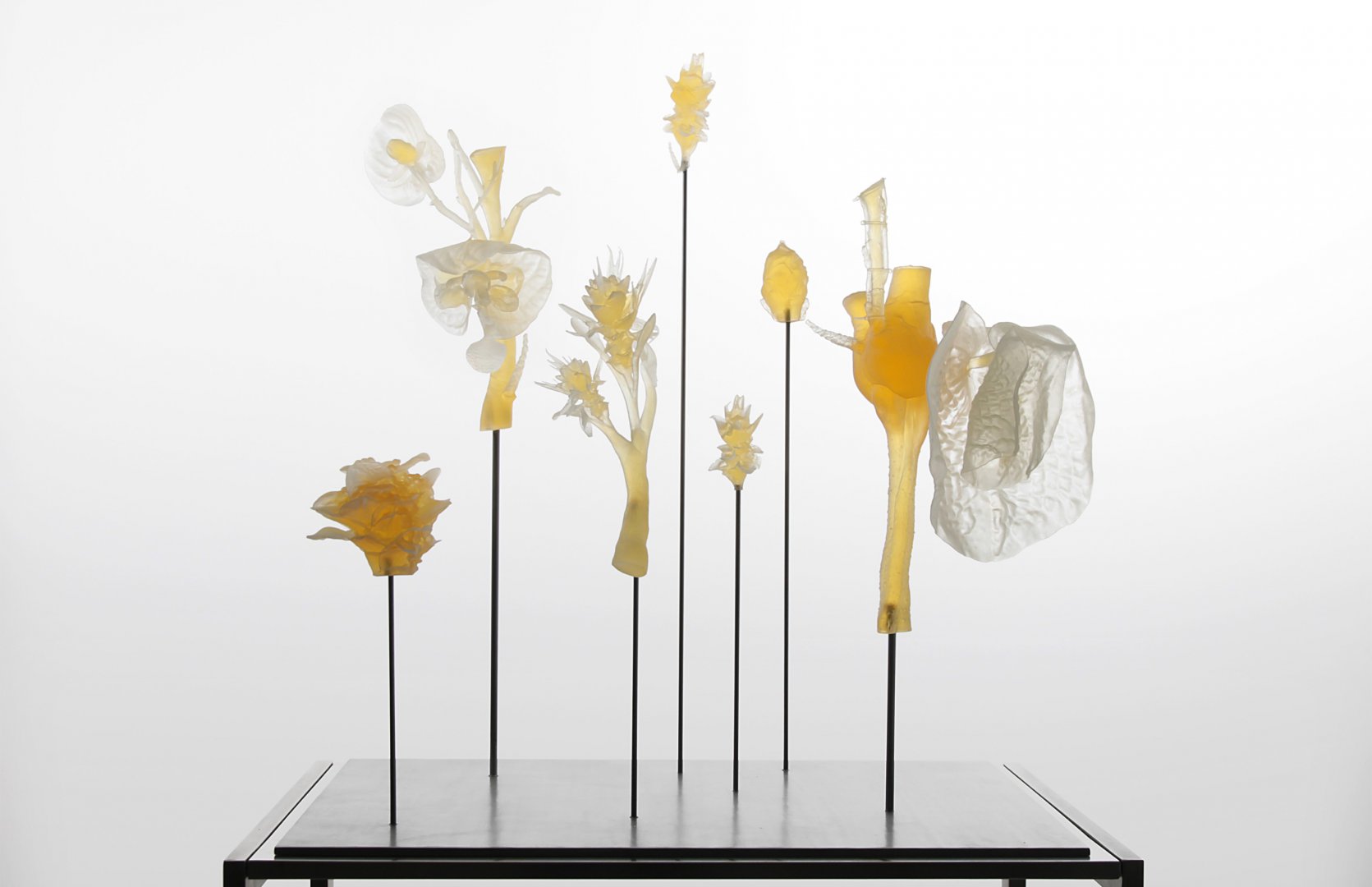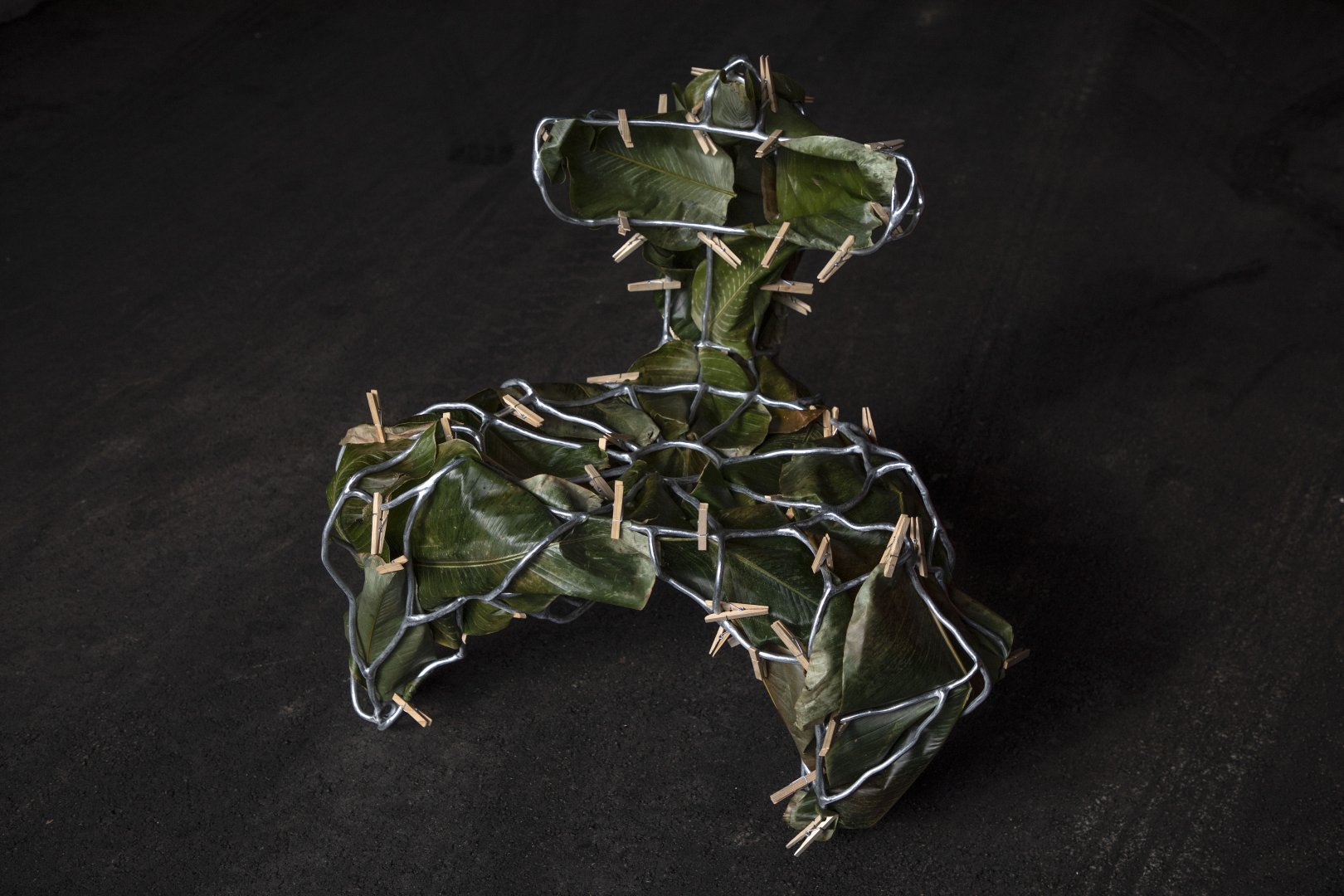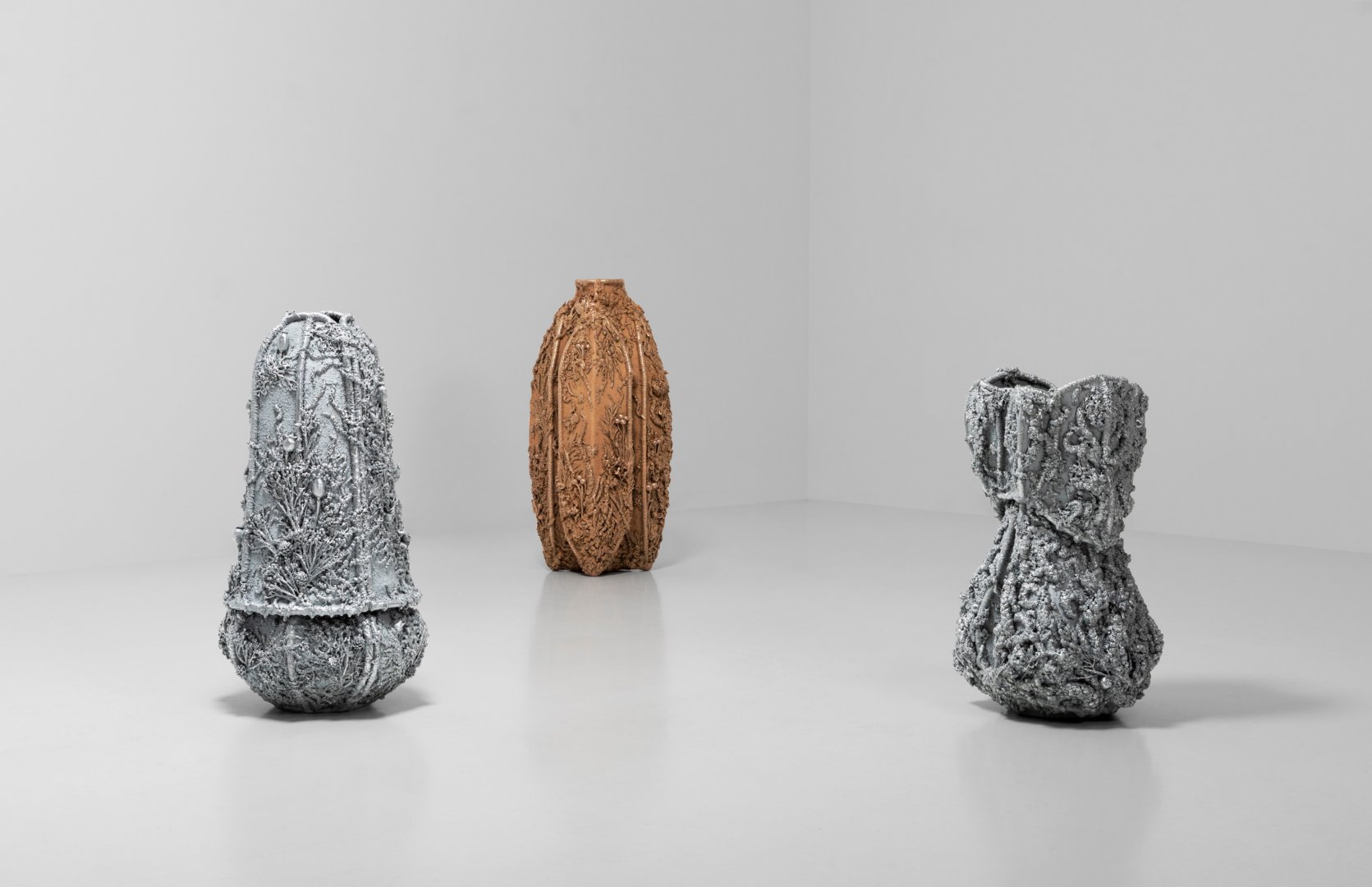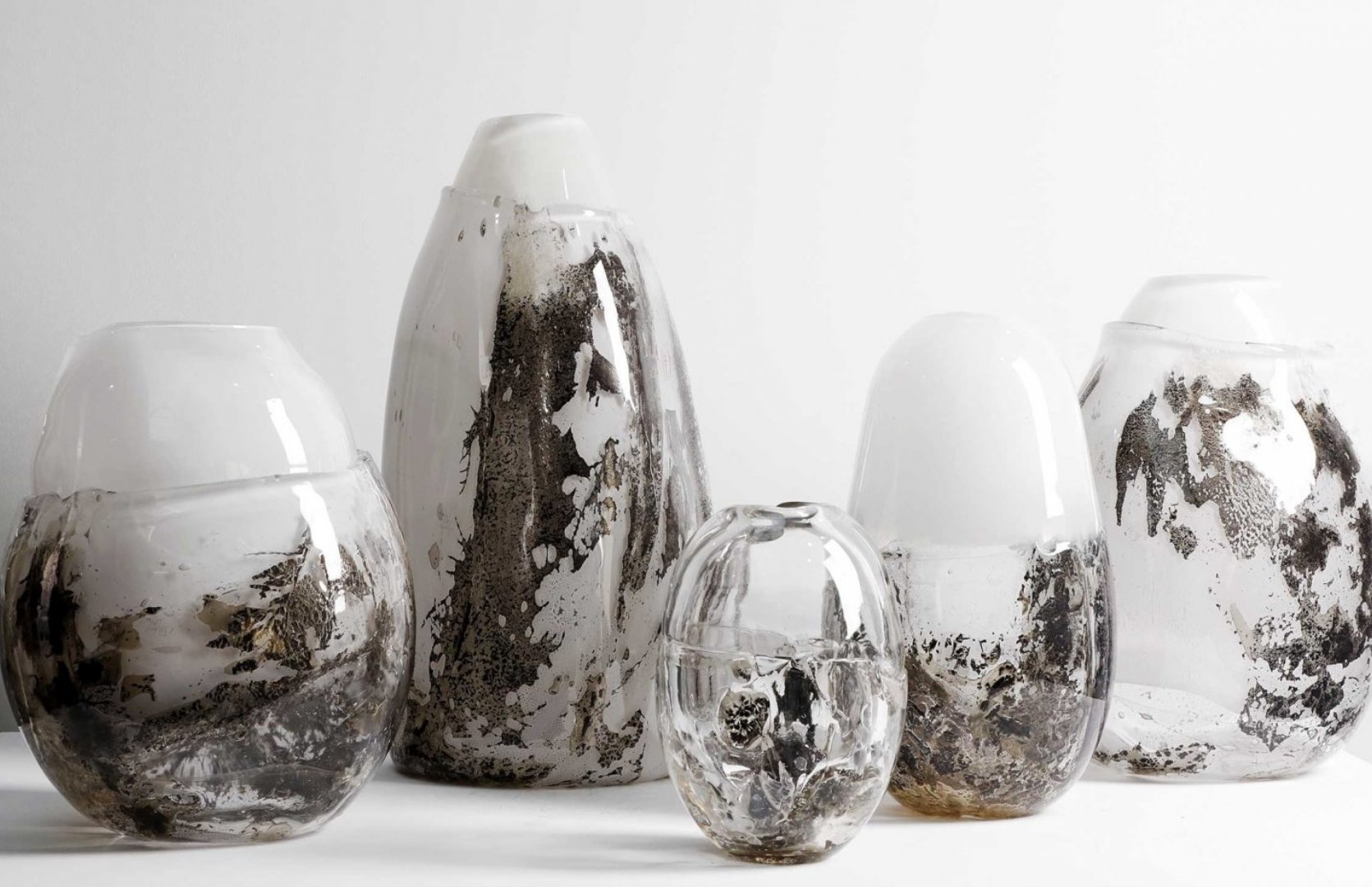
DNA of Things
Over the course of the years, we have been deeply involved in a dialogue between man and the natural world. We have realised that this dialogue has been based on our perceived interrelationship between materiality and temporality. In other words, our work has continuously questioned the limits imposed on materiality by the transformative factor of time. For the solo show in Ljubljana, presented within the frame of the 27th Design Biennale, we have revisited our past endeavours and their philosophical foundations, and opened a new research chapter marking a step forward in the field of scientific research applied to our creative method.
In the exhibition, stages of our ongoing research were presented as a Living Archive, reviewing the techniques and experiments with which we have sought to transform degradable organic elements into materials and objects that question their ephemeral status and negotiate their potential preservation.
Linking back to our very first queries that resulted in the “Flowering Transition” project (2013-2014), where in-depth research into the global cut-flower market allowed us to reveal the existing and imagined implications of genetic mutation applied to natural evolution, we have delved yet again into the very core of plants' existence: the DNA helix. As the most compact and most efficient storage medium mankind has discovered so far, we learned that the void spaces between the DNA molecules can store encoded information that can be recuperated and deciphered even thousands of years later, revealing the stories of those who inhabited the planet before us.
Inspired by the creative dialogue conducted with an art-scientific startup, Grow Your Own Cloud, the DNA of Things was initiated in order to define and document our emotions, intuitions and thoughts related to genius loci – a mythical spirit of a particular place: be it our private garden, a perennial meadow surrounding an esteemed art institution, or even a haunting memory of a person or a situation, linked to a certain space and time. Such emotion-laden message could be encrypted within the DNA of certain plant species – an axiophyte, pertaining to a particular location, itself being worthy of protection. We would then encapsulate the message-carrier in a ‘time capsule’ – a sculpture located in this same specific location, devised in a way that it biodegrades over years or decades. Exposed to the power of nature, it would gradually reveal the layers of meaning and interaction. The prototype presented at BIO27, complemented by an experimental video-performance made in collaboration with Butoh artist Wojciech Matejko who tackled the possibilities of human interactions with vernacularity and nature, marked a stepping stone towards a new body of work that highlights our relationship with the natural environment, the quest to protect endangered species, and the poetics and logic of memory and remembering.
In the exhibition, stages of our ongoing research were presented as a Living Archive, reviewing the techniques and experiments with which we have sought to transform degradable organic elements into materials and objects that question their ephemeral status and negotiate their potential preservation.
Linking back to our very first queries that resulted in the “Flowering Transition” project (2013-2014), where in-depth research into the global cut-flower market allowed us to reveal the existing and imagined implications of genetic mutation applied to natural evolution, we have delved yet again into the very core of plants' existence: the DNA helix. As the most compact and most efficient storage medium mankind has discovered so far, we learned that the void spaces between the DNA molecules can store encoded information that can be recuperated and deciphered even thousands of years later, revealing the stories of those who inhabited the planet before us.
Inspired by the creative dialogue conducted with an art-scientific startup, Grow Your Own Cloud, the DNA of Things was initiated in order to define and document our emotions, intuitions and thoughts related to genius loci – a mythical spirit of a particular place: be it our private garden, a perennial meadow surrounding an esteemed art institution, or even a haunting memory of a person or a situation, linked to a certain space and time. Such emotion-laden message could be encrypted within the DNA of certain plant species – an axiophyte, pertaining to a particular location, itself being worthy of protection. We would then encapsulate the message-carrier in a ‘time capsule’ – a sculpture located in this same specific location, devised in a way that it biodegrades over years or decades. Exposed to the power of nature, it would gradually reveal the layers of meaning and interaction. The prototype presented at BIO27, complemented by an experimental video-performance made in collaboration with Butoh artist Wojciech Matejko who tackled the possibilities of human interactions with vernacularity and nature, marked a stepping stone towards a new body of work that highlights our relationship with the natural environment, the quest to protect endangered species, and the poetics and logic of memory and remembering.
| YEAR: 2023 |
COLLABORATORS: Curated by Federica Sala. Marcin Rusak Tamara Pilawska Baranowska Aga Beaupre Adam Bialek Anna Jurgielewicz Monika Seyfried, Cyrus Clarke (Grow Your Own Cloud) Klara Czerniewska-Andryszczyk Sotiris de Wit Barbara Doroszuk Grzegorz Gołaszewski Rafał Iwański Igor Jansen Dominik Karasiński Magda Kopczyńska Ivo Krankowki Stanisław MacLeod Wojciech Matejko Czarek Mosiołek Grzegorz Myjkowski Anna Pytlak Justyna Stasiowska Mateusz Wappa Artur Winiarek |
PHOTO CREDITS: Marcin Rusak Studio |
LOCATION: Ljubljana, Slovenia |
















